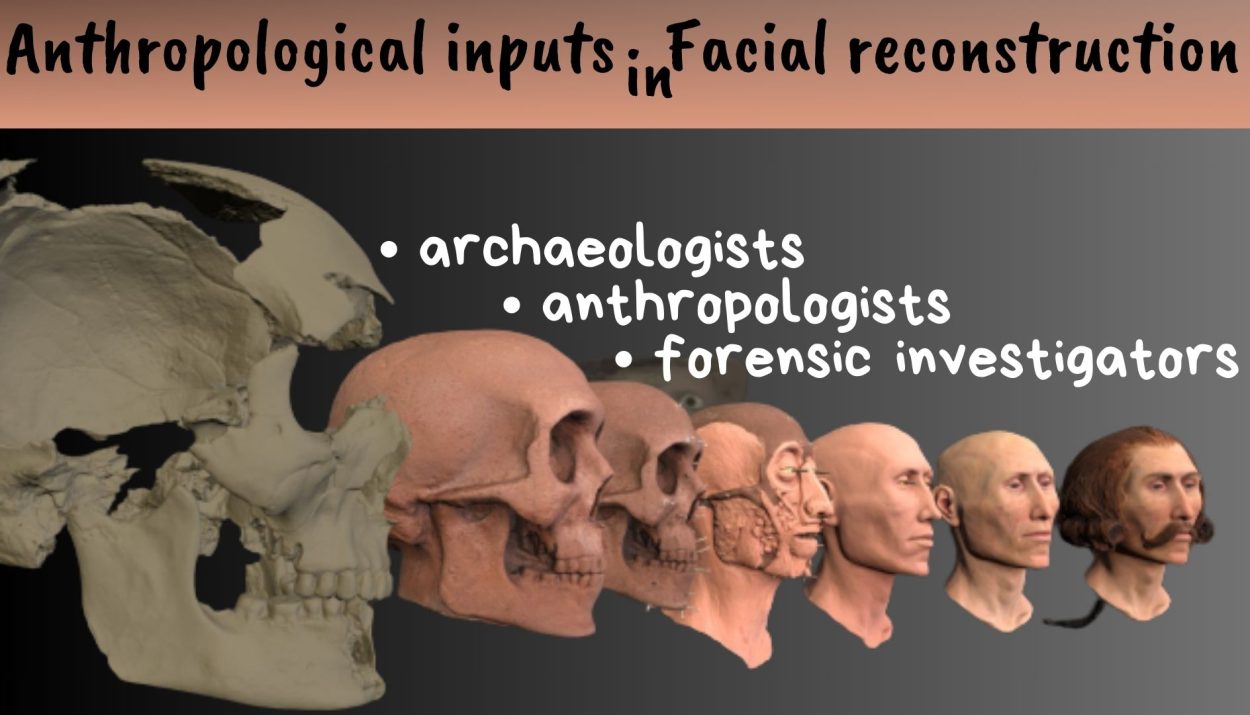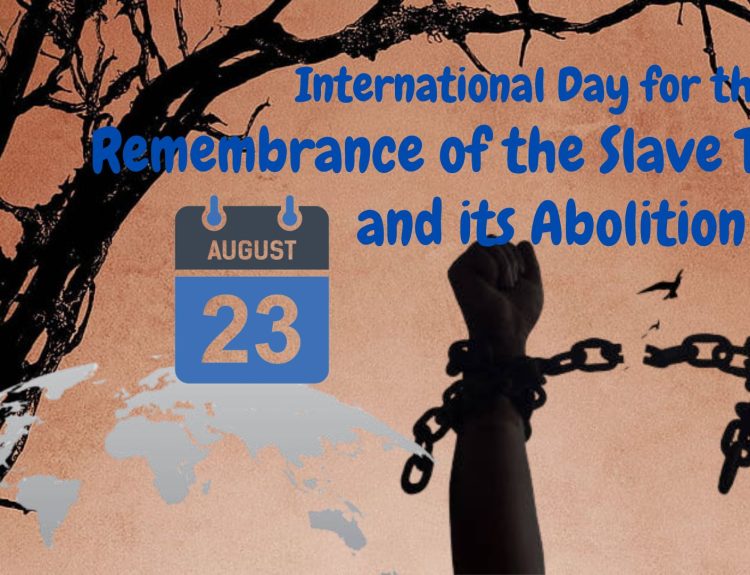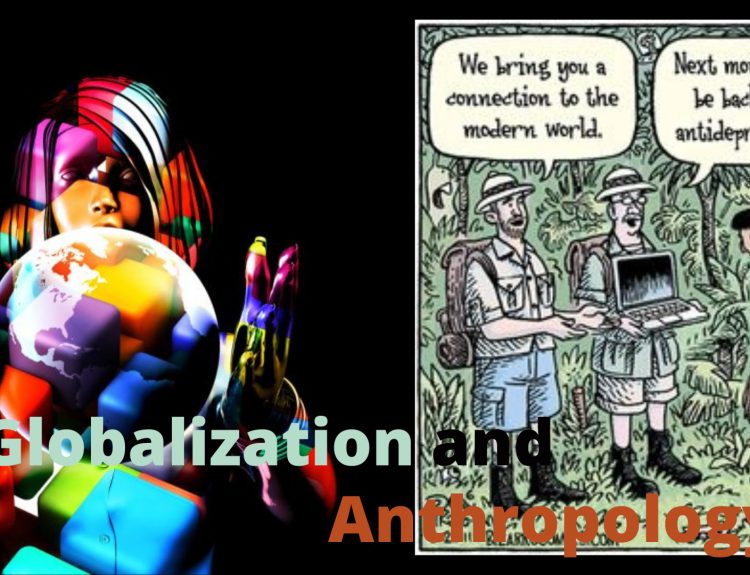Facial reconstruction is a crucial aspect of forensic anthropology, aiding in the identification of individuals from skeletal remains and playing a significant role in solving mysteries and cold cases. This article delves into anthropological inputs in facial reconstruction, shedding light on the methods, techniques, and scientific insights that make it possible.
Facial reconstruction is a multidisciplinary process that combines anatomical knowledge, artistic skill, and advanced technology to recreate the appearance of an individual’s face when only skeletal remains are available. In 1883, Hermann Welcker, and 1895, Wilhelm His, Sr., became pioneers by creating the initial three-dimensional facial approximations using cranial remains.
Understanding Anthropology’s Contribution
The pervasive presence of anthropology in contemporary society is no accident; it’s a result of anthropologists occupying diverse roles and settings today. Among these roles, forensic anthropology, a subfield of anthropology, focuses on the study of human remains in a legal context. It plays a pivotal role in forensic investigations, particularly in identifying unknown individuals based on skeletal remains. Beyond forensics, anthropologists also apply their skills to reconstruct the faces of historical figures, offering us glimpses into the past.
Facial reconstruction becomes particularly crucial when only the skull is available. Anthropologists apply their expertise to meticulously reconstruct the face, providing law enforcement agencies with a visual representation that aids in identification. This process requires the collaborative efforts of anthropologists, archaeologists, and forensic investigators.
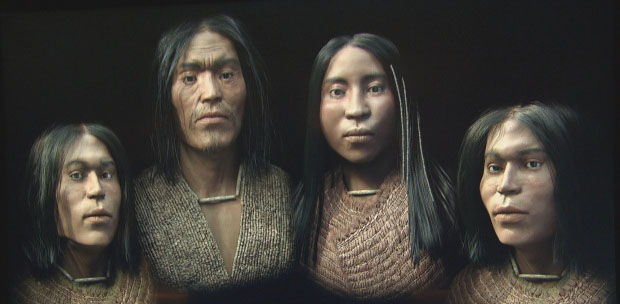
Types of reconstructions
In the realm of facial reconstruction during investigations, two primary approaches exist, the two-dimensional and three-dimensional methods.
Two-Dimensional Reconstruction: This method necessitates collaboration between forensic anthropologists and artists to achieve successful results. Karen T. Taylor pioneered this method in the 1980s. The process involves affixing tissue depth markers to various anthropological landmarks on the unidentified skull. These markers guide the creation of facial drawings on transparent vellum, using lateral photographic prints as a foundation.
Three-Dimensional Reconstructions: Sculptures are crafted from casts of cranial remains. Similar to two-dimensional reconstructions, three-dimensional reconstructions require the expertise of both a forensic anthropologist and an artist. High-dimensional 3-D computer images are generated by manipulating scanned photographs of unidentified remains, stock photographs of facial features, and other reconstructions. This approach is highly advantageous in victim identification, as it results in natural-looking representations that do not appear artificial.
Superimposition Technique: Unlike 2D and 3D reconstructions, superimposition requires prior knowledge about the identity of the remains. It comes into play when the identity of skeletal remains is entirely unknown. The process involves overlaying an X-ray of the skeletal remains onto a photograph of an individual suspected of belonging to the unidentified skeletal remains. Accurate alignment of anatomical features is crucial for a successful match.
The Scientific Process
Before embarking on facial reconstruction, it is essential to gather comprehensive information about the remains. This includes details about the location, history, and circumstances of their discovery. Anthropologists begin by collecting various types of data, such as skeletal remains, photographs of the skull, and any available medical records or DNA samples. These inputs provide the foundation for the reconstruction.

By meticulously examining the skull’s features, anthropologists determine the individual’s age, sex, and ancestry using anthropometry. These details guide the subsequent steps in the reconstruction process.
A crucial aspect of facial reconstruction involves placing tissue depth markers on the skull. These markers indicate the thickness of soft tissue at various points on the face, enabling the accurate recreation of the person’s appearance.
Collaborating closely with anthropologists, artists create a facial approximation based on the skeletal features and tissue depth markers. This step demands a keen understanding of anatomy, proportion, and artistic skill.
Advancements in Technology
Recent technological advancements have revolutionized facial reconstruction. Anthropologists can now use 3D scanning and printing to create accurate facial structures, improving the precision and efficiency of the process.
For instance, the facial reconstruction of Cheddar Man involved the utilization of 3D scanning and 3D printing technologies. His skull, unearthed at Gough’s Cave in Cheddar Gorge, Somerset, in 1903, served as the basis for this remarkable process.
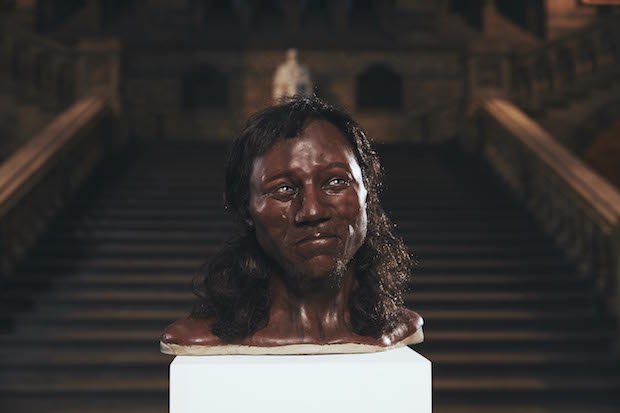
Sophisticated facial recognition software assists in creating more detailed and realistic reconstructions. These tools help match reconstructed faces to missing persons’ databases, increasing the chances of identification.
Limitations and Ethical Considerations
Facial reconstruction is not foolproof and is subject to a degree of uncertainty. Factors such as artistic interpretation and variations in tissue thickness can impact the accuracy of the final representation.
The partial completion of facial reconstruction results from the absence of certain bone fragments. Forensic artists face constraints in their available data, which remains limited concerning age, gender, and body type diversity. Furthermore, the absence of standardized methods for reconstructing facial features presents a significant challenge. There is a pressing need for the establishment of a unified and official facial reconstruction methodology.
Ethical considerations encompass the use of facial reconstructions, particularly when they are shared with the public. Striking a balance between solving cold cases and respecting the privacy of the deceased poses a challenging aspect of this field.
Key Facial Recognition Cases
In 1996, ancient skeletal remains were discovered in Kennewick, Washington known as “Kennewick Man”. Forensic facial reconstruction was used to recreate the face of this ancient individual.
A facial reconstruction of a woman from Bronze Age Bohemia, who resided in Central Europe nearly four millennia ago, has been crafted using her skull and traces of her DNA.
Ava, a Bronze Age woman, lived over 3,800 years ago. Her remarkably preserved body was discovered in 1987 in Achavanich, Scotland. Through forensic analysis and facial reconstruction, Ava’s face was brought to life, offering a glimpse into the distant past and adding a human dimension to history.
Forensic experts reconstructed the face of King Tutankhamun, Egypt’s famous boy pharaoh, using CT scans of his mummy.

Facial reconstruction of the extinct human relative, the ‘Hobbit’ (Homo floresiensis), revealed a small, ancient hominin with a distinctive visage. Using skeletal remains discovered in Indonesia, scientists created a likeness that added depth to our understanding of this enigmatic species, provoking questions about their place in human evolution.
Conclusion
Anthropological inputs in facial reconstruction represent a fascinating intersection of science, art, and forensics. The combination of anatomical knowledge, technological advancements, and artistic interpretation allows us to bridge the gap between skeletal remains and the faces of the past. This invaluable contribution continues to serve as a powerful tool in solving mysteries and bringing closure to the unknown.
References
facial reconstruction- Britannica
Forensic facial reconstruction- Wikipedia
35 amazing facial reconstructions, from Stone Age shamans to King Tut- Live Science
Old Skull Gets White Looks, Stirring Dispute- The New York Times
3D Printed Bust of Cheddar Man Shows Early Britons Had Dark Skin and Light Eyes


